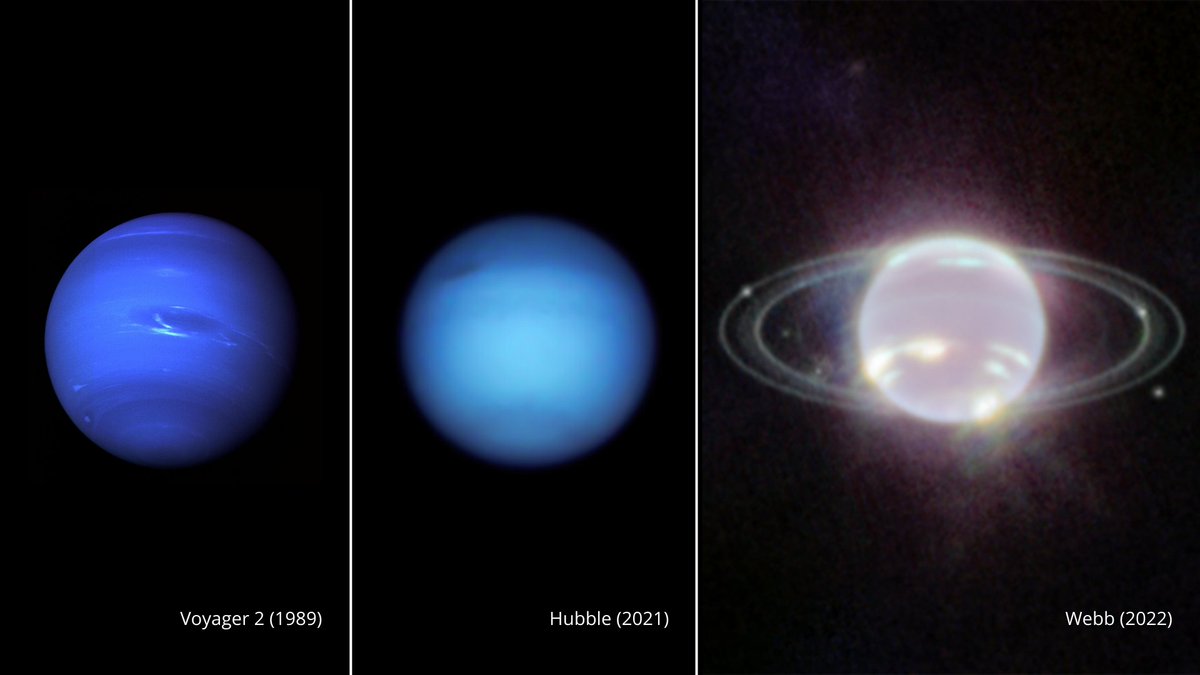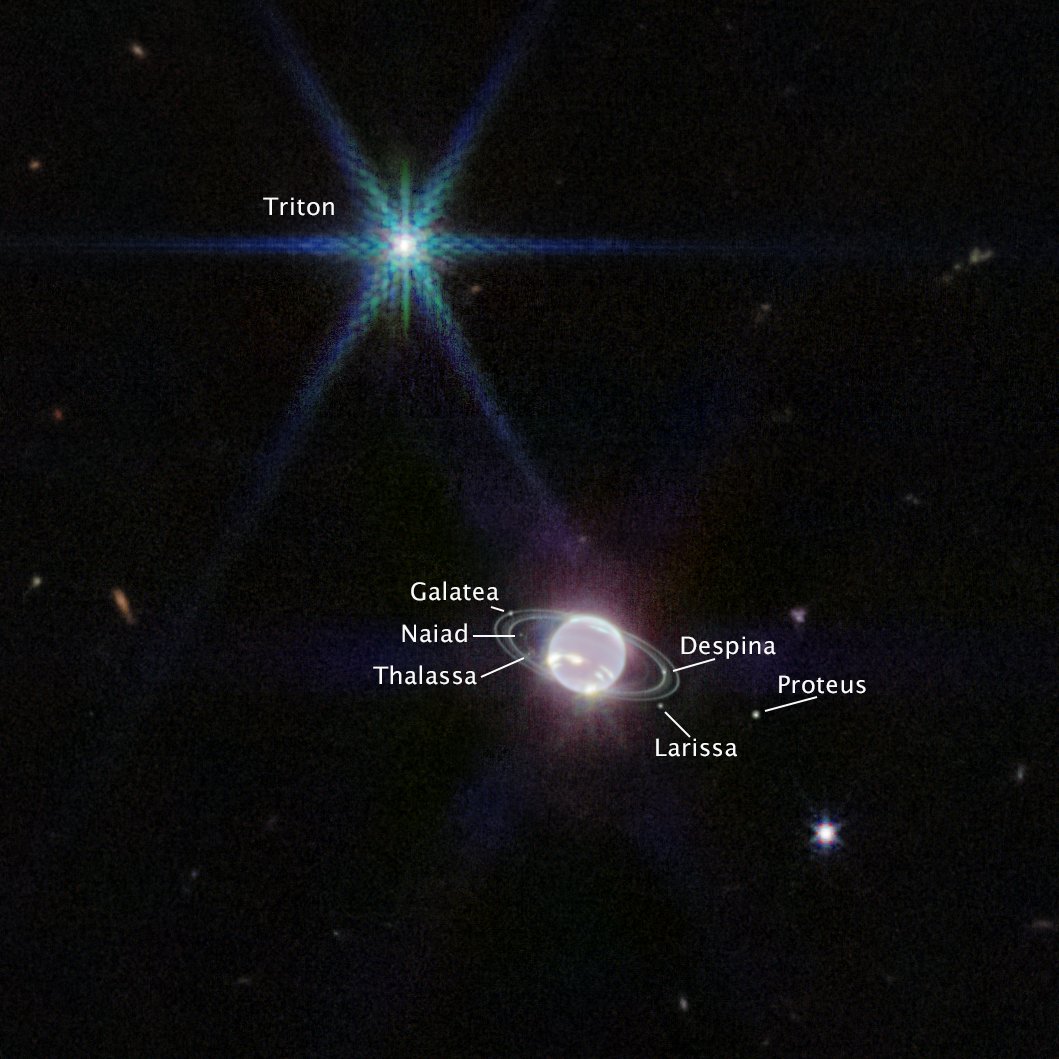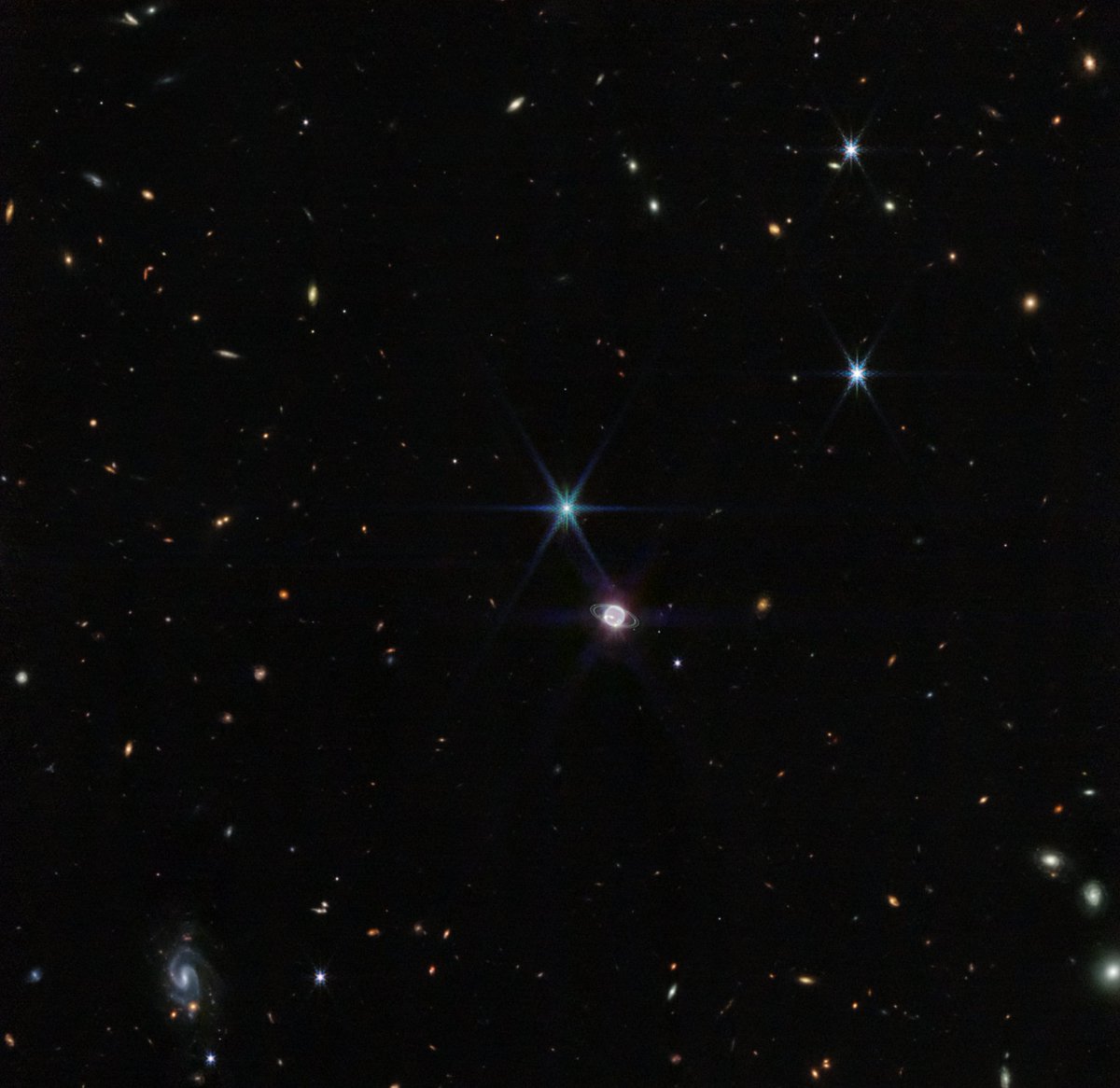
Hey Neptune. Did you ring? 👋
Webb’s latest image is the clearest look at Neptune's rings in 30+ years, and our first time seeing them in infrared light. Take in Webb's ghostly, ethereal views of the planet and its dust bands, rings and moons: go.nasa.gov/3RXxoGq #IAC2022
Webb’s latest image is the clearest look at Neptune's rings in 30+ years, and our first time seeing them in infrared light. Take in Webb's ghostly, ethereal views of the planet and its dust bands, rings and moons: go.nasa.gov/3RXxoGq #IAC2022

In visible light, Neptune appears blue due to small amounts of methane gas in its atmosphere. Webb’s NIRCam instrument instead observed Neptune at near-infrared wavelengths, so Neptune doesn’t look so blue! 

That’s no star. It’s Neptune’s large, unusual moon, Triton! Because Triton is covered in frozen, condensed nitrogen, it reflects 70% of the sunlight that hits it — making it appear very bright to Webb. 6 of Neptune’s other moons (labeled) are also seen here. 

Let’s zoom out and get the big picture! Some quick Neptune facts:
📍 Far out - 30x farther from the Sun than Earth
🕶️ Hello darkness my old friend - Neptune doesn’t get much Sun, so high noon would be like a dim twilight on Earth.
🥶 Ice giant. Brr.
📍 Far out - 30x farther from the Sun than Earth
🕶️ Hello darkness my old friend - Neptune doesn’t get much Sun, so high noon would be like a dim twilight on Earth.
🥶 Ice giant. Brr.

• • •
Missing some Tweet in this thread? You can try to
force a refresh













